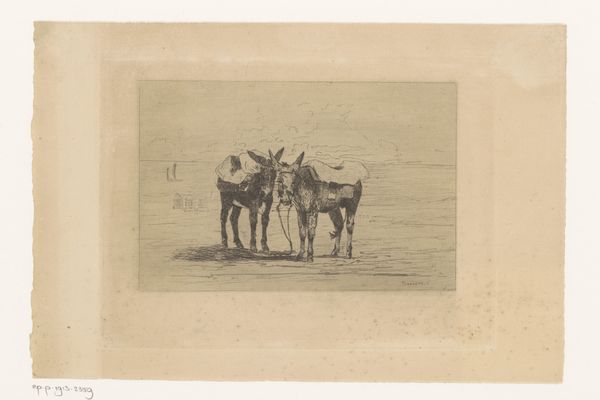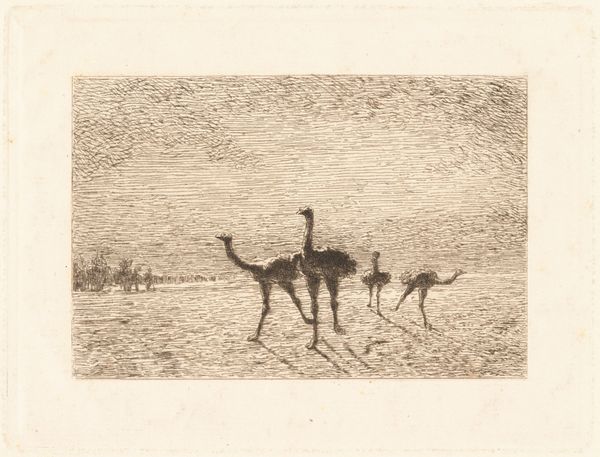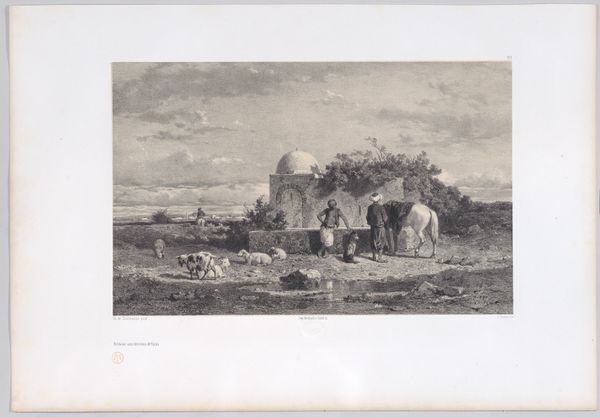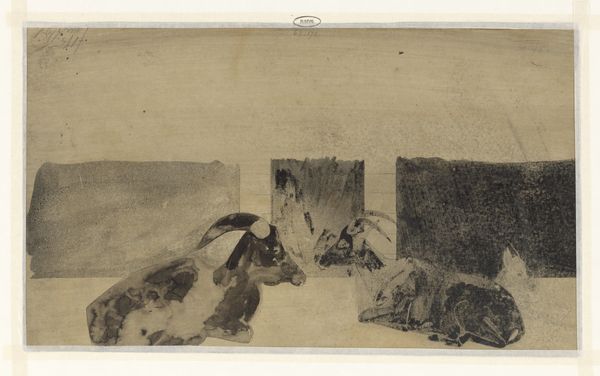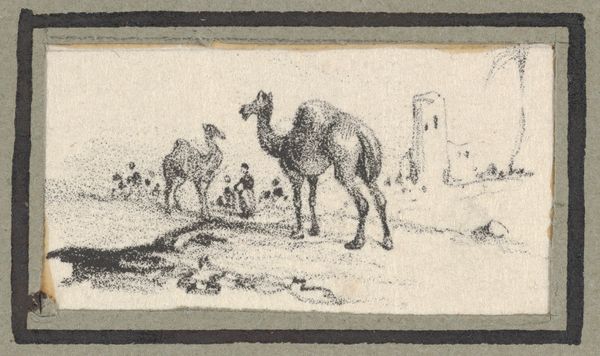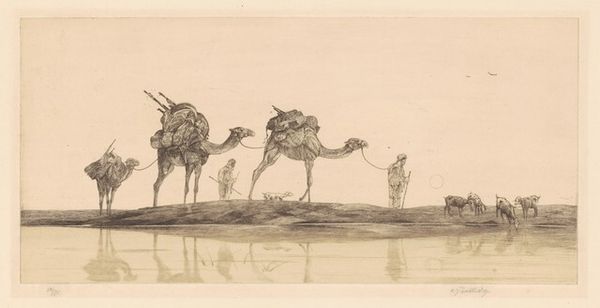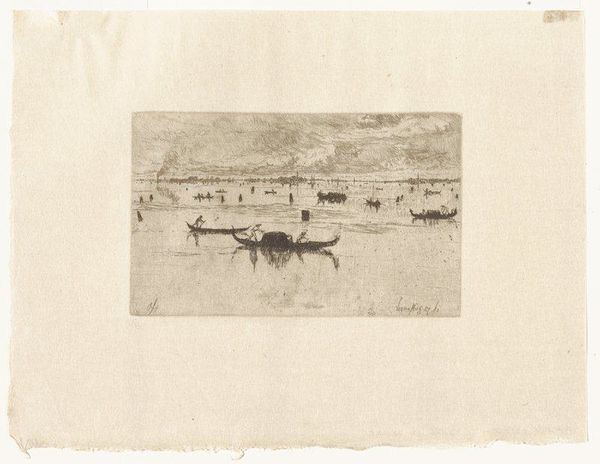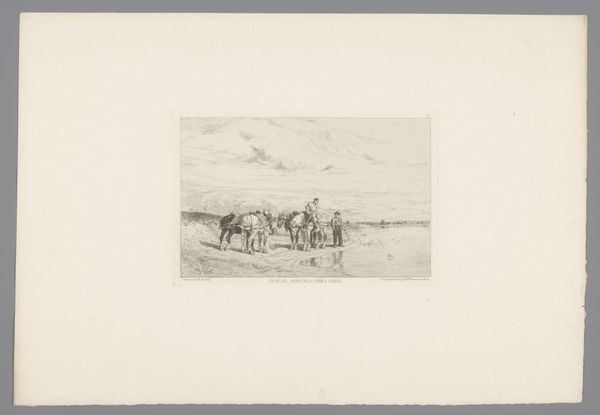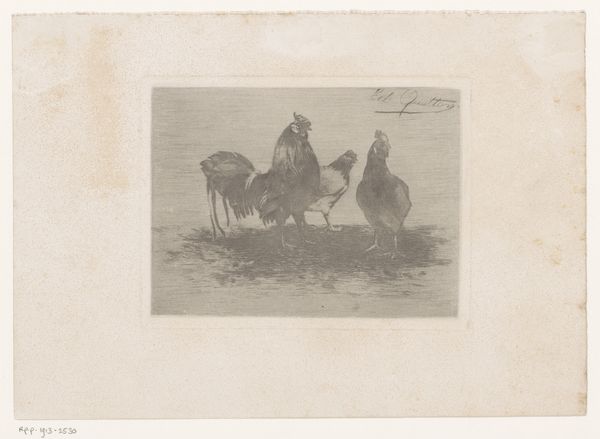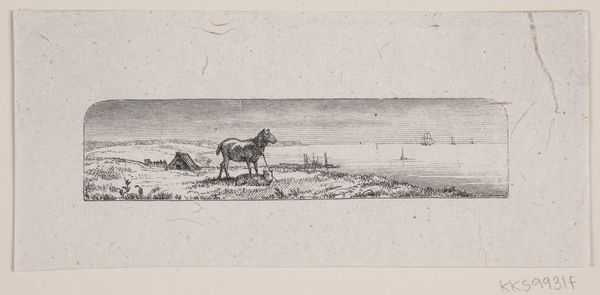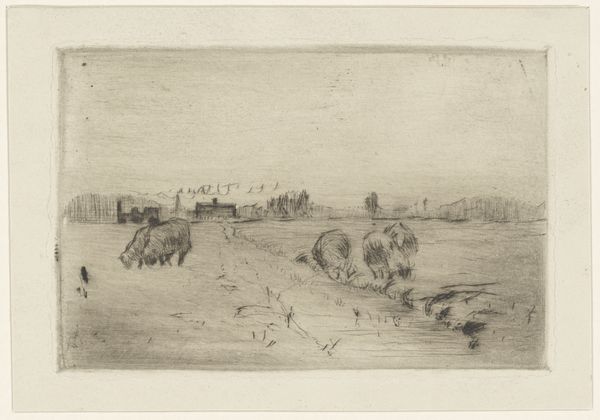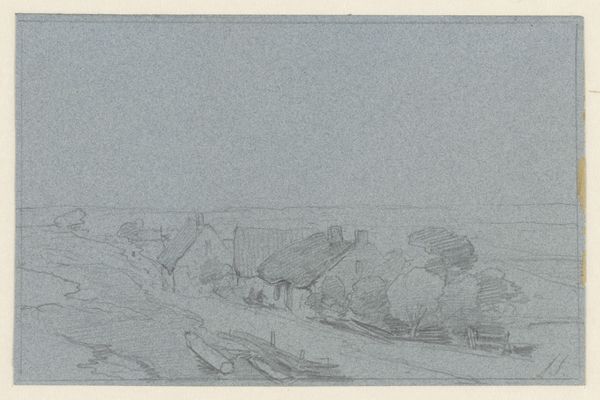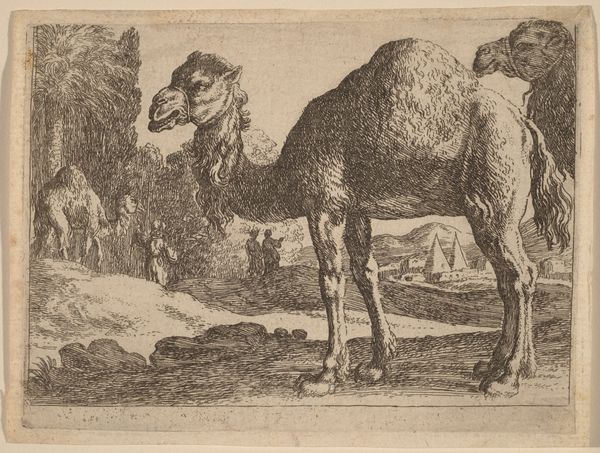
Desert near Alexandria (74. Près d’Alexandrie. Le désert. 1842.) 1842
0:00
0:00
daguerreotype, photography
#
landscape
#
daguerreotype
#
photography
#
orientalism
#
men
#
watercolor
Dimensions: Image: 3 11/16 × 9 1/2 in. (9.4 × 24.1 cm)
Copyright: Public Domain
Curator: Welcome. Before us is Joseph-Philibert Girault de Prangey's "Desert near Alexandria", a daguerreotype from 1842. What strikes you upon first viewing? Editor: The stillness is what grabs me—a pervasive calm despite the scene’s implicit hardships. It almost feels otherworldly, partially due to the limited tonal range. The stark clarity is hauntingly captivating, but where is the harshness of labour and environment? Curator: That's a keen observation. The composition emphasizes horizontality, reinforcing that sense of quietude. The arrangement of figures and the camel acts almost as a classical frieze in its balance. Editor: While its compositional elements clearly construct that balance, what interests me is its production. As one of the earliest photographs of Egypt, its material reality would have shaped that "balance," to its creation –the metallic plates, the arduous journeys. I bet such process defined aesthetics! Curator: A valid point, but one should remember that photography, especially early photography, was a deliberate art. The composition directs our gaze in ways that underscore a structured, designed vista. Editor: Precisely—a design inextricably intertwined with the materials, conditions, and the artist’s relationship to both his craft and subjects. What was Girault de Prangey hoping to say via the arduous process and composition that might otherwise not have translated from life directly onto the plate? Curator: What one extracts, I think, is a constructed "orient," designed both through light and silver. Editor: And surely, one with intent beyond the purely aesthetic? It whispers volumes regarding orientalist projections and control during such era of colonialism. We see here less of 'nature' captured so as an intentional representation. Curator: Your reading introduces a layer of depth, a counterpoint to the artwork's seeming simplicity. Editor: Thank you. In essence, viewing work as embedded in labor reveals much more. Curator: Agreed. Thank you, I think this perspective enriches our engagement with this fascinating piece.
Comments
No comments
Be the first to comment and join the conversation on the ultimate creative platform.
